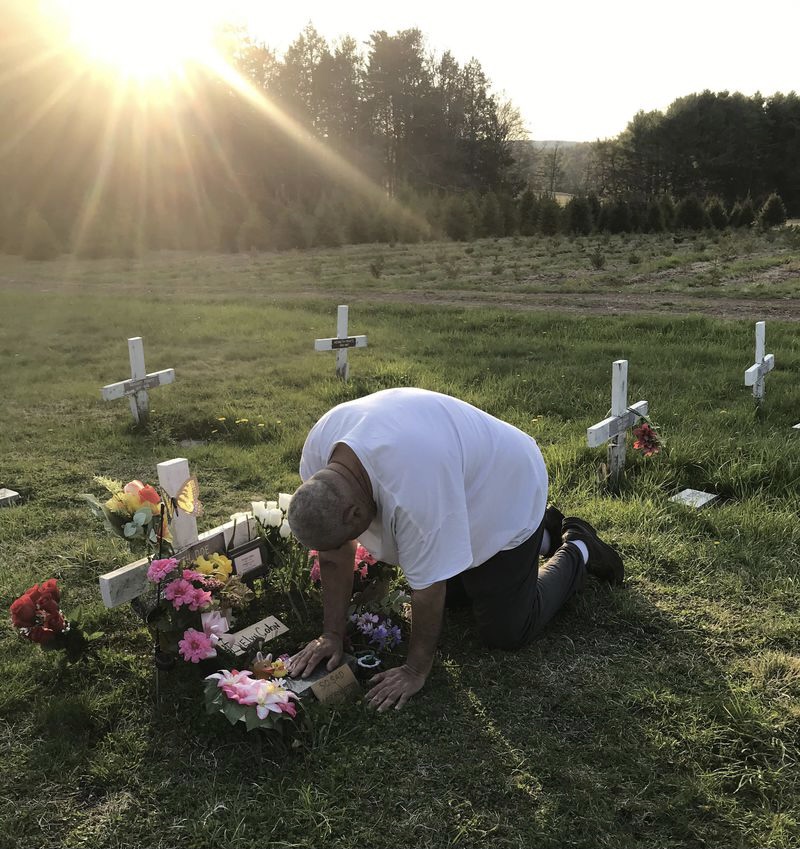Beth Doe
Evelyn Colon was brutally murdered towards the end of her pregnancy in 1976. Her identification after 45 years has led investigators to a suspect in her death.
In December 1976, a teenager out for a walk along the Lehigh River in Carbon County, Pennsylvania discovered a dismembered human head and immediately returned home and notified authorities. Pennsylvania State Police and the Carbon County Coroner responded to the scene. Three separate suitcases were located, all containing dismembered remains of what appeared to be a young white female and her unborn, full-term baby girl. Found inside the suitcases were six sheets of paper from the September 26, 1976 edition of the New York Sunday News, helping date the crime.
Forensic Pathologist Dr. Halbert Fillinger from the Philadelphia Medical Examiner’s Office completed the autopsy on the female. Eventually known as "Beth Doe", the young woman was estimated to be between the ages of 16-22, around 5 feet tall and 145 lbs at her time of death. She had distinct dental work, a couple small markings, and two distinct facial moles. Investigators determined that she was was sexually assaulted, strangled, and shot a close range. She was dismembered, postmortem. It’s hard to imagine a more gruesome and horrific crime.
The Pennsylvania State Police conducted an extensive investigation trying to identify Beth Doe and her child. She was entered into all available national missing person databases, NCIC, NamUs, and ViCAP. NCMEC intaked this case in 2002 at the request of the PSP. Over the years NCMEC helped process over 29 leads to missing persons enhancing lead information through ASD’s analytical resources and securing forensic comparisons through FSU. The female’s fingerprints had been sent to multiple state and national databases during the initial investigation and uploaded into NGI in 2017. In 2007 authorities exhumed her remains so additional biometrics could be obtained and advanced technologies be applied. Dental records were examined and coded and in 2013 FSU worked with the American Dental Association and had the case featured in their newsletter hoping to generate leads. In 2008 full DNA profiles for the female and baby were uploaded into CODIS through UNT. No matches to dentals and no hits to her fingerprints or DNA. Multiple forensic facial reconstructions failed to produce leads to her identity as well.

At this point law enforcement had investigated this case for more than four decades and NCMEC had been providing support services for two decades. That is an immense effort and with all leads exhausted, NCMEC made the recommendation to try advanced DNA testing techniques. My company, Othram , is a proud partner with NCMEC and we are trying to help them with many of their 700 cases of unidentified children. For more on our work with NCMEC, check my post on Pecos Jane Doe .
In 2020, the Pennsylvania State Police, working with NCMEC, moved forward to leverage advanced DNA testing to help produce leads that could identify Beth Doe or a close relative to her. NCMEC engaged DNA Labs International to produce a DNA extract from skeletal remains from the case. In November 2020, the DNA extract was sent to Othram. The Othram team used a combination of Forensic-Grade Genome Sequencing® and proprietary human enrichment to produce a genealogical profile for Beth Doe. There was was plenty of DNA, however, the challenges in this case were degradation and bacterial contamination. Fortunately, the laboratory at Othram has a number of tools developed to account for and accommodate challenging forensic DNA evidence. I touch on some of the things that make forensic DNA testing so much different than regular DNA testing, in this post . If you don’t have time to read it, just remember that forensic DNA evidence really does require special methods and equipment — you can’t just send that DNA evidence anywhere.
In February 2021, the Othram team returned the genealogical profile to NCMEC and DNA Labs International. They identified a top match in a genealogical database with over 1700cM of shared DNA to Beth Doe. Investigative work by the Pennsylvania State Police revealed the very close match to be that of Luis Colon Jr., a nephew to Beth Doe. Luis confirmed that his father’s sister, Evelyn Colon, had not been heard from since the mid-1970s. Incredibly, Luis had uploaded his DNA profile to many genealogical sites hoping to reconnect to Evelyn. This is where a parallel story begins.

Unrelated to the investigation and unaware of Beth Doe, Luis Colon Jr. was searching for his aunt. He knew that she was a young mother living with a boyfriend. He knew that his aunt had eventually stopped keeping in touch with family. Apparently a letter, written by her boyfriend, was sent to Evelyn’s family, after her death, detailing that Evelyn had delivered her child, everything was fine, and that she would be in touch, in the future. In sharing his DNA, Luis had hoped to find out where his aunt was. He assumed she was still alive, raising her child.

After 45 years, and thanks to data uploaded by Luis and the efforts of so many groups, working as team, Beth Doe was identified as fifteen-year-old Evelyn Colon. Colon, a Puerto Rican native, had been living in Jersey City, NJ with her boyfriend/father of her child prior to her death. Her boyfriend, Luis Sierra, who wrote the note to the family and was living with Evelyn at the time, was arrested in March 2021 and charged with her homicide.

I have shared before that in many of these older cases, the world moves on, but the families and friends of the victim do not — they cannot. Evelyn’s brother did not (just look at the photo above). The families of the unidentified need answers and closure to begin the process of healing. This case, in particular, also reminds us all that restoring the identity of a homicide victim is the first step in being able to investigate the crime and seek justice for the victim .
What can you do to help solve the next cold case? You can either (1) help financially support a case involving an unidentified person or you can (2) submit your own DNA data , in case you might be a distant relative to an unknown person. If you are missing someone in your family, you should definitely consider submitting your DNA data. Many of these cases can be solved by combining crowdfunding, volunteered data, cutting-edge genomics, and tremendous teamwork. Its a lot of work, but its always worth the effort. You can learn more about how to get involved in these efforts, here .
If you want to learn more about the case of Evelyn Colon, here are some great links:
-
Jason Nark wrote a wonderful story covering the case. Coincidently, he was also the journalist that broke the news when Mostly Harmless was identified.
-
The local news covered the case and provides some more details on the suspect in Evelyn’s murder.
-
Othram maintains a profile on this case at DNASolves.com .